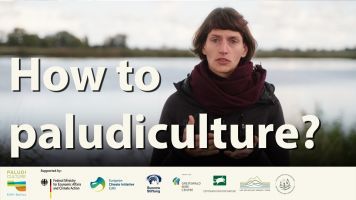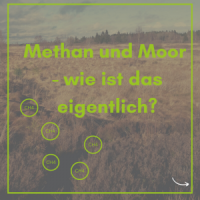News
2023
Q&A on peatland rewetting
EU Nature Restoration Law and the Soil Health
22/05/2023 Negotiations on the Nature Restoration Law (NRL) and the Soil Health Law are ongoing amongst EU parliament and EU council. Considering the role of peatland restoration appropriately for both, it's vital for stakeholders to understand it. That's why the Greifswald Mire Centre, in which the Succow Foundation is a partner, and further partners assembled seven concise Q&A. Find answers on
- - the difference between rewetting and restoration
- - costs and benefits of these activities
- - availability of data on peatland distribution and condition, compatibility of rewetting with productive land use and food security
- - methane emissions after rewetting
How to paludiculture?
Yes, we can … do it, new film shows

15/05/2023 Paludiculture – just a buzzword? More open questions than possibilities promised? Clearly no! Agriculture on wet and rewetted peatlands is urgently needed to combat the climate crisis. How to – that’s of real interest to farmers, landowners and politicians in peatland rich countries all over Europe. That’s why 50 people from 10 EU member states had a look at paludiculture sites in Northern Germany, guided by scientists and implementation experts of Greifswald Mire Centre and Succow Foundation. Our new film "How to paludiculture?" shows what the participants learned along the 5-day paludiculture study tour. It presents their burning questions, needs and perspectives as well as projects and experience already existing and made by paludiculture pioneers here. A lot to take home not only for them – please spread to your community, too! This film was prepared in the project EUKI - Carbon capturing by Baltic peatland farmers financed by the European Climate Initiative (EUKI) and the toMOORow project. Both are projects of Succow Foundation and partners.
Small peat moss saves CO2 big style
85 percent less carbon dioxide emissions
27/03/2023 Growing peat mosses on rewetted raised bog areas instead of draining them and using them as grassland can save up to 85 percent of greenhouse gas emissions. This was the finding of a research team from the Universities of Rostock and Greifswald, which for the first time has drawn up a greenhouse gas balance for the entire cultivation cycle of peat mosses. The scientists now present the results in the article Full-cycle greenhouse gas balance of a Sphagnum paludiculture site on former bog grassland in Germany in the international journal Science of the Total Environment. They thus provide further arguments for the MOOSstart project that has just begun. In the three-year joint project of the University of Greifswald together with partners, the cultivation of peat mosses in paludiculture is to be promoted. In the process, the production of seeds for the small plant is to be advanced on a large scale in a bioreactor.
The project with the detailed title "Yield increase and upscaling of seed production and application as an initial for the cultivation of renewable peat moss biomass in paludiculture" is carried out by the universities of Greifswald and Freiburg, as well as the Hochschule Anhalt and the practical partner Niedersächsische Rasenkulturen (NIRA). MOOSstart is further developing a process in which vegetative plant material is sterilely propagated in a photobioreactor, constructing a low-cost bioreactor for this purpose and testing it. It is also working on suitable technology for sowing the seeds produced and is developing methods to increase crop yields. The scientists would like to make a contribution to climate-neutral peatland use and substrate management.
Mean methane and what to do with it
New Factsheet available

20/12/2022 In a nutshell, our new factsheet explains The role of methane in peatland rewetting. Wet peatlands release methane (CH4), and the climate-damaging greenhouse gas is also produced when rewetting formerly drained areas. It has a much stronger effect on the climate than carbon dioxide (CO2), but remains in the atmosphere for comparably short time. By 2030, methane emissions are to be reduced by 30% worldwide compared to 2020. Does this now argue against restoring peatlands? It doesn't, as the new factsheet explains: Addressing the climate crisis requires reducing atmospheric concentrations of all three greenhouse gases relevant to peatlands (CH4, CO2, nitrous oxide (N2O)). Rewetting effectively reduces long-lived CO2 emissions from peatlands to zero effectively and quickly and is therefore always the right choice for climate protection.
Save the Date (for faster wetter)
Conference: Accelerating peatland climate protection
28/02/2023 The German Federal Foundation for the Environment and the Greifswald Mire Centre jointly invite you to the conference Accelerating peatland climate protection - How to bring peatland rewetting to grande scale on 1st June 2023. In order to achieve the German climate protection goals by 2045, peatland protection must take up speed. But hurdles are still high. The Action Programme for Natural Climate Protection and the National Peatland Protection Strategy now offer the opportunity to remove obstacles to peatland protection projects and to accelerate planning and approval at both federal and state level. How this could look like in concrete terms will be demonstrated and discussed during the conference at the DBU Centre for Environmental Communication in Osnabrück, including research results from the Greifswald Mire Centre and experiences from various peatland and climate protection projects in the peatland-rich federal states.











